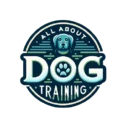Master Advanced Dog Training: Essential Tips and Techniques
Introduction
The world of dog training is a vast and exciting landscape that is constantly growing and evolving. With each year, new techniques are introduced, and proven methods are refined to accommodate shifting perceptions and goals. Advanced dog training is a continuation of this evolution, focusing on developing higher-level skills in dogs and improving their problem-solving abilities. It differs from basic training as it helps dogs master intricate tasks and understand complex commands.
The joy of training a dog beyond the basic level stems from the clear communication it fosters between you and your dog. It’s not just about obedience or performing tricks, but about creating an understanding and mutual respect that strengthens your bond.
Understanding Advanced Dog Training
Advanced dog training, at its core, involves teaching your pets the art of concentration and prolonged focus. Unlike standard commands, advanced tasks often require a dog to wait patiently, make decisions, and exhibit self-control.
Engaging your dog in advanced training is beneficial for their mental stimulation. Less active dogs, especially, become more lively when they are put through a system of regular, advanced workouts. This also helps in keeping problematic behaviors like excessive chewing, barking, or digging at bay.
Advanced Training Techniques
Advanced training techniques are based on positive reinforcement, providing an animal-friendly, non-violent approach to ensure your dog reaches its full potential. They encompass tried-and-true methods such as clicker training, targeting, shaping, and proofing, as well as intelligent disobedience and distance control.
Clicker Training
In clicker training, a device is used to make a distinct, consistent sound to mark when the dog has performed correctly. The sound is always followed by a reward, like food or a toy. Eventually, your dog associates the sound of the clicker with the reward and becomes keener to follow the commands to earn their prize.
Targeting
Targeting focuses on marking places or objects using a particular part of the dog’s body (usually the nose or paw). Once the dog identifies and targets the places or object, it is rewarded. This approach can be combined with clicker training and can aid in shaping behaviors or teaching your dog tricks.
Shaping
Shaping breaks down a complex task into smaller actions that lead to the accomplishment of the task. It’s an effective way to encourage creativity among your dogs while reinforcing their skills.
Proofing
Proofing is the act of training your dog to respond consistently to commands in different situations and environments. Dogs naturally prefer routines, and any change to that environment often confuses them. Through proofing, you can ensure your dog’s performance isn’t affected by these changes.
Intelligent Disobedience
Intelligent disobedience is when a dog disobeys a command because it understands that following it would be dangerous. This is especially important for service dogs.
Distance Control
Distance control is the ability to issue commands and have them obeyed even when separated by a large distance. It is not enough for a dog to listen when you’re close, but essential they obey even when you’re far away.
Advanced Dog Training Commands
The complexity of advanced dog training commands distinguishes them from basic commands. They require not only learning but also consistent application, concentration, and understanding from your dog.
Some of these include ‘heel’ (getting your dog to walk beside you without a leash), ‘settle’ (making your dog calm down on command), ‘back up’ (getting your dog to walk backwards), ‘go to place’ (having your dog go to a specific spot and stay there), and ‘off’ (stop touching a person or a thing on command).
Challenges in Advanced Dog Training
It’s essential to understand that advanced training comes with numerous challenges. Key among these is the need for continuous reinforcement. Dogs often slip back into their old habits, especially when they’re not being monitored. Therefore, you need to reinforce the skills occasionally.
Also, some breeds are more challenging to train than others, and it’s essential to be patient with them. Compassion, consistency, and patience are key in realizing the full benefits of advanced dog training.
Frequently Asked Questions (FAQs)
I have just adopted a puppy; should I start with advanced training?
No. It’s always best to start training a new puppy with basic obedience training. Once the puppy masters these commands, you can consider introducing advanced training step by step.
Is it possible for older dogs to undertake advanced training?
Yes. Even though training might take longer for older dogs, they can learn and master advanced skills. All it takes is consistency and a lot of patience.
Can advanced training cause stress to my dog?
When done correctly, advanced training should not stress your dog. It can be a fun and stimulating activity for dogs. However, overworking can result in stress, so ensure you balance training periods with lots of play and rest times.
Conclusion
Advanced dog training goes beyond teaching your dog to sit or fetch. It’s about bonding, clear communication, respect, and understanding, forming an incredible connection with your pet. As you progress in advanced training, both you and your dog learn patience, control, and determination, skills vital for a mentally and physically fit lifestyle.
In the end, the exact methods and commands you wish to pursue will depend on your personal needs and those of your dog. Always remember, the goal should be to enjoy the process. Together, you and your dog can conquer the world!





